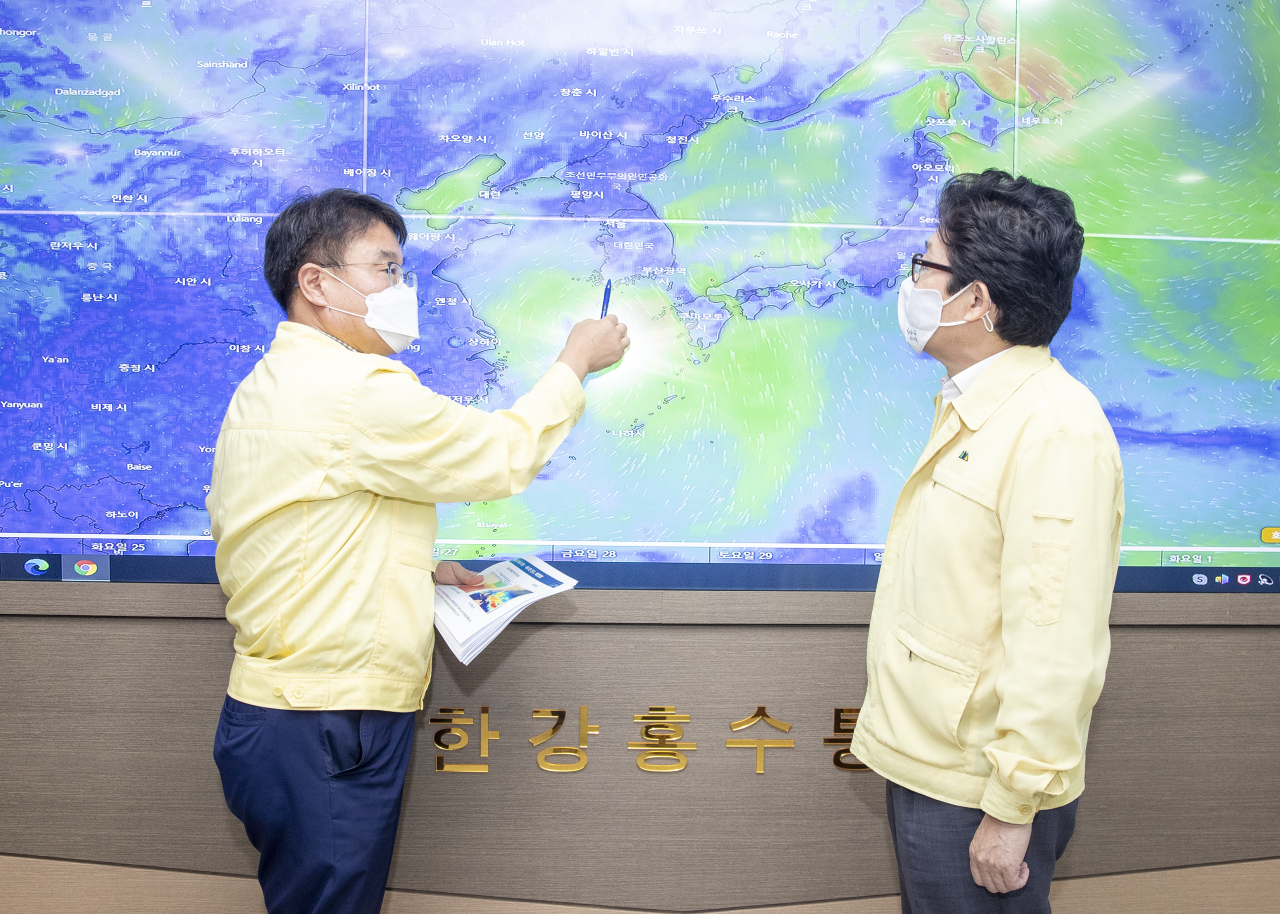 |
(Ministry of Environment-Yonhap) |
The powerful Typhoon Bavi was churning toward the Korean Peninsula on Monday from the sea south of Korea and expected to pass by the southern island of Jeju the following day.
The Korea Meteorological Administration (KMA) said the season's eighth tropical storm, formed off the east coast of Taiwan, is currently some 270 kilometers off the west coast of Japan's Okinawa Island and traveling at about 13 kph.
As of 10 a.m. Monday, its central pressure was 980 hectopascals, with its radius of maximum wind at 280 km.
The typhoon is forecast to pass off the west coast of the resort island of Jeju on Wednesday afternoon. It is likely to move nearest to Seoul early Thursday and make landfall in North Korea's Hwanghae Province later that day.
The KMA expected the storm, currently relatively weak in power, to gain strength and peak in force at around 3 a.m. Wednesday.
As the peninsula is forecast to come under its influence from Tuesday night till Thursday, the KMA advised safety measures be put in place before it arrives.
The weather agency warned of a peak gust reaching 144-216 kph in Jeju and the west coastal regions of the Jeolla provinces Wednesday night till Thursday. The highest instantaneous wind speed can reach 126 kph in the country's south and west areas.
The typhoon, at its peak, is forecast to become the third strongest of the four-level system, with a peak gust of 184 kph.
Woo Jin-kyu from the weather agency said, while the typhoon is unlikely to grow into one from the strongest level, the country should brace for strong winds that make it hard for people to walk straight, and can easily topple and destroy structures.
"People should refrain from going outside, and outdoor facilities should be secured to prevent them from getting damaged by the winds."
While its path and size can change as the typhoon approaches the peninsula, the KMA also issued safety warnings of storm surges and strong winds for low-lying coastal areas that lie in the storm's path.
The country is still reeling from the aftermath of the longest rainy season on record this summer, with torrential rains and flash floods killing dozens of people and wrecking havoc on buildings, farmlands and infrastructure nationwide. (Yonhap)








![[Today’s K-pop] Blackpink’s Jennie, Lisa invited to Coachella as solo acts](http://res.heraldm.com/phpwas/restmb_idxmake.php?idx=644&simg=/content/image/2024/11/21/20241121050099_0.jpg)